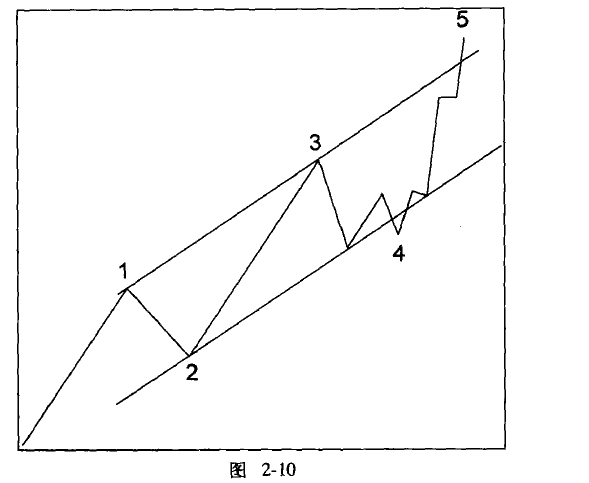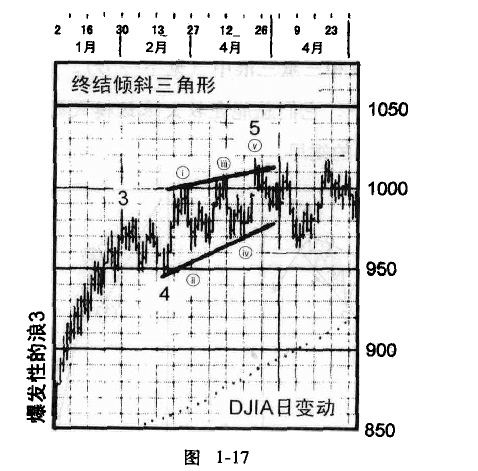This lesson is relatively dry, discussing only one overlapping phenomenon.
Within the convergence lines of a parallel channel or inclined triangle, if the fifth wave moves towards its upper trend line amidst shrinking volume, it indicates that the wave's endpoint is about to reach or is unable to reach the upper trend line. If there is significant volume during the upward movement of the fifth wave, it indicates the possibility of breaking through the upper boundary line, which is what Elliott referred to as 'overlapping'. Near the overlapping point, the smaller degree wave's fourth wave will move horizontally close to the bottom of the parallel channel, allowing the fifth wave to break through the channel in the final volume. Remember, volume is crucial.
The downward overlap caused by wave 2 in wave 4 or wave 5 often predicts the occurrence of overlapping. Overlapping can be verified by an immediate reversal back below the channel line. Overlapping with similar characteristics can also occur in a declining market.

Elliott correctly warned that larger degree overlaps can make it difficult to identify smaller degree waves during the overlapping period, as the final fifth wave market breaks through the price channel of smaller degree waves.
Below are examples of overlapping in different forms:


